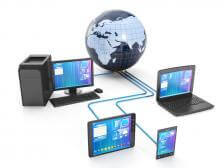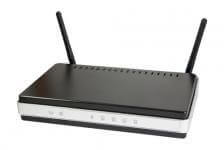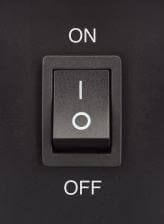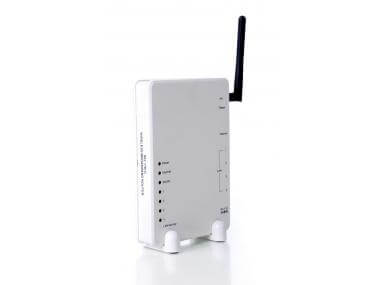Switches, Hubs, Bridges, and Routers Explained
Computers talk to each other and the web in a variety of ways. This communication is facilitated by routers, bridges, switches, and other hardware. Tech Talker explains what these devices are, what they do, and which are best for your home’s computer network.

In this week’s episode, I’ll be cover just what these devices are, what they do, and which are best for your computing needs!
Sponsor: Want to save more, invest for the future, but don’t have time to be a full-on investor? Betterment.com helps you build a customized, low-cost portfolio that suits your goals. Sign up at www.betterment.com/techtalker and receive a $25 bonus when you make a deposit of $250 or more.
As you probably know, there are quite a few devices that are help facilitate the communication of computers. Most of you are probably familiar with routers and modems, but there are also hubs, switches, and bridges. If you’re not familiar with these, don’t worry. Today, I’ll go over what all of these gadgets do and hopefully clear up any confusion.
Routers and Modems
Let’s start off with the most well-known of these devices, the router. Odds are, you have a router at home which allows your computers, phones, tablets, and coffeemaker to connect to the internet. Routers receive information in the form of packets, and these packets are addressed just like a letter.

Many routers come with a built-in modem. Or you might have a modem separate from your router. A modem is a piece of hardware that converts one type of signal medium to another type of signal medium. In most U.S., households modems generally convert coaxial cable to ethernet or RJ11 to RJ45. Or, if you are one of the lucky few, it might convert fiber optic cable to ethernet. There are a bunch of different modems on the market, but my favorite is the Motorola Surfboard.
Now let’s look at switches……
Switches

A handy way to understand this is to think of your MAC address like your Social Security Number (it will stay the same no matter where you live). On the other hand, your IP address is more like your street address (as you move, it changes).
So if you took your laptop to a coffee shop, it would have a different IP address than the one at home, but the same MAC address. The benefit of using IP addresses over MAC addresses is thatswitches have a finite number of MAC addresses they can keep in their memory. Generally, the number of addresses a switch can hold is pretty high, but if someone has a ton of devices or is on a corporate network, the slots can fill up pretty quickly!
Bridges and Hubs
The next item on our list is a bridge. A bridge is like a switch but it only has one input and one output port. It literally just bridges a connection. A bridge is then followed by a hub. Hubs and switches may look very similar on the outside, but they work in completely different ways. Instead of directing traffic like a switch or a router, a hub sends the same information to every device connected to it. From there, it’s up to the computer to decide if the traffic is for it or another computer.
This is incredibly inefficient! It’s like you’re at a bakery and you took a number, and the person behind the counter yells out a bunch of random numbers until they accidentally stumble on yours.
So why would you even bother with a switch, hub, or a bridge? As a consumer you probably wouldn’t, but there are good (but very complicated) reasons why they make sense for businesses. For everyday home computing, you just want to stick with a router or a switch.
Nowadays most modern routers have switches built-in. This is pretty handy for a consumer because it allows you high network speeds and efficiency all from one box.
If you find yourself running out of ports on your router, you may want to look into purchasing a switch. Most routers come with 4-6 ethernet ports on the back which should be fine for most households. Some circumstances that might merit the need for more ports are if you are trying to hardwire in multiple ethernet jacks into different rooms in your house (like you might find in an office), or you might just have a ton of devices all connected at once. LAN party anyone?
If you’re looking for a switch, I recommend buying one with Gigabit speeds. You can get cheaper ones labeled as “Fast Ethernet” or 100 megabits, but this will make any file transfers across your network crawl. Effectively the difference between gigabit and 100 megabit is about 10 times!

With that here are your 3 Quick and Dirty Tips for optimal networking:
- Most consumers will only need a router and a modem for their home network.
- Switches are used like power strips on the network, they increase the amount of ports you have available.
- Hubs and bridges are older forms of networking devices that aren’t often used in homes and are generally reserved for business use.
Well that’s all for today!
Have a question about anything in this episode? Or a suggestion for a future podcast? Send me an email at techtalker@quickanddirtytips.comcreate new email or post it on the Tech Talker Facebook wall.
Until next time, I’m the Tech Talker, keeping technology simple!
Betterment LLC is an SEC Registered Investment Advisor. Brokerage services are offered by Betterment Securities, an SEC registered broker-dealer and member FINRA/SIPC.
Investments are not FDIC Insured. No Bank Guarantee. May Lose Value.
Investing in securities involves risks, and there is always the potential of losing money when you invest in securities.
Before investing, consider your investment objectives and Betterment’s charges and expenses.
Not an offer, solicitation of an offer, or advice to buy or sell securities in jurisdictions where Betterment and Betterment Securities are not registered.
Network, switch, and cables images courtesy of Shutterstock.






